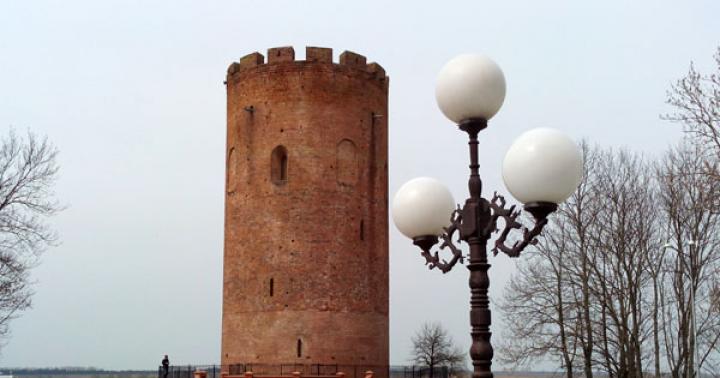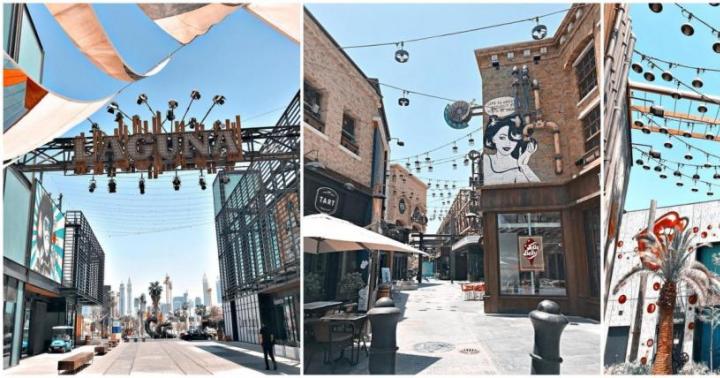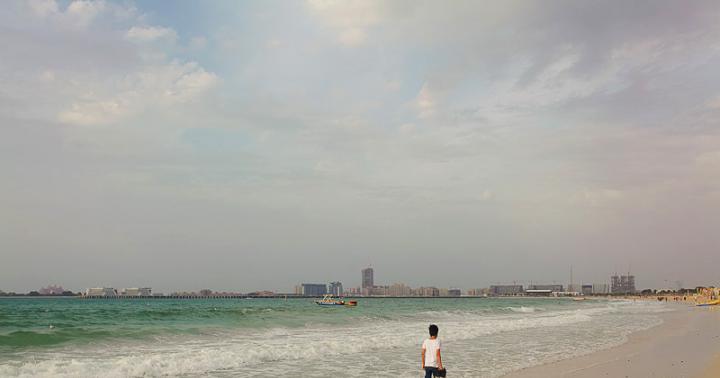Satellite map Kurgan region shows that the region is located on the border with Kazakhstan, Sverdlovsk, Chelyabinsk and Tyumen regions of the Russian Federation. The area of the region is 71,488 square meters. km.
The region is divided into 24 municipal districts, 2 urban districts, 9 cities, 6 urban-type settlements and 1,220 rural settlements. Largest cities Kurgan region - Kurgan (administrative center), Shadrinsk, Shumikha, Kurtamysh and Dalmatovo.
The Kurgan region is extremely rich in minerals. Peat, iron ores, brick and bentonite clays, uranium and mineral water. The economy of the Kurgan region is based on metallurgy, mechanical engineering, petrochemicals, agriculture and the food industry.
Lake Medvezhye, which is similar in mineralogical composition to Dead Sea
Brief history of the Kurgan region
In Soviet times, the territory of the modern Kurgan region was part of the Ural and then the Chelyabinsk region. In 1943, the Kurgan region was created. During the Great Patriotic War, numerous industries were evacuated to the region.

Dalmatovsky Assumption Monastery
Sights of the Kurgan region
On detailed map Kurgan region you can see some natural attractions from a satellite: Maryino Gorge, located on the border with Tyumen region, an inscription from trees “Lenin 100 years”, lakes Gorkoye, Murgazy, Medvezhye and numerous swamps.
In the Kurgan region, it is worth seeing some religious attractions: the Dalmatovsky Monastery complex, the Intercession and St. Nicholas churches in Dalmatovo, the Cathedral of the Transfiguration and the Resurrection Church in Shadrinsk, the Chimeevsky St. Kazan Monastery in the village. Chimeevo and Holy Cross Church in the village. Zverinogolovskoe.

Spaso-Preobrazhensky Cathedral in Shadrinsk
It is also worth visiting the house-museum of the Decembrists in Kurgan, the Prosvetsky Arboretum and seeing the Alakul burial ground, dating back to the Bronze Age. Numerous tourists come to the Kurgan region for the sake of the Dead Sea of the Trans-Urals - mineral lake Bear and for the sake of other mineralogical resorts.
Note to tourists
Gulrypsh - a holiday destination for celebrities
Is on Black Sea coast Abkhazia is an urban-type settlement called Gulrypsh, the appearance of which is closely connected with the name of the Russian philanthropist Nikolai Nikolaevich Smetsky. In 1989, due to his wife’s illness, they needed a change of climate. The matter was decided by chance.In the southern part of the West Siberian Plain, the Kurgan region is located - one of the constituent entities of the Russian Federation. It occupies a flat territory with a total area of more than 70 km2. On the satellite map of the Kurgan region you can see the areas bordering this region:
- Chelyabinskaya;
- Tyumen;
- Sverdlovskaya;
- Kostanayskaya (Kazakhstan).
The region has an elongated shape along the Kazakh border. About 500 large and small rivers and streams flow through its territory. On the map of the Kurgan region by district, you can examine in detail the entire hydrographic network of the region, which belongs to the Tobolsk basin.
Of particular interest are the numerous lakes in the region, which are formed by flat lowlands (saucers). Total The number of reservoirs is approaching 3000. Most of the lakes consist of fresh water, but there are also salty reservoirs, the level of salt concentration in which is equal to the reservoirs of the best health resorts and resorts in the country.
Significant lakes, which can be seen on a map of the Kurgan region with diagrams:
- Eadgilds;
- Manyass;
- Okunevskoe
- Black;
- Half.
The healing lake in the region is Medvezhye. At its bottom, sulfide muds were found, which are used in the treatment of joint diseases and skin problems. In terms of its properties, Bear Lake is equated to the Dead Sea.
Looking at the areas on the map of the Kurgan region, you can find a lot interesting places, resorts, big and small cities, settlements.
Districts on the map of Kurgan region
The region includes 24 districts. The central ones are Ketovsky, on its territory the city of Kurgan is located, and Shadrinsky. Here are the main regional facilities, as well as industrial enterprises, which can be seen on the Map of the Kurgan Region with settlements.
The largest number of lakes and protected areas are located in the areas:
- Mkushinsky;
- Petukhovsky;
- Polovinsky;
- Chastoozersky;
- Lebyazhevsky.
Their location can be seen in the eastern part.
The main highway E-30 passes through the regional center, which connects Kazakhstan with Chelyabinsk region and Yekaterinburg. A detailed road map of the Kurgan region shows that the route bypasses main city region along its northern outskirts. Main roads also include highways such as R-329, R-330 and R-354.
The region is connected to neighboring regions by the western branch of the Trans-Siberian Railway, which also passes through the regional center. If you look at the map of the Kurgan region in detail, you can find an airport located in Kurgan and operating regular international flights.
Map of the Kurgan region with cities and villages
The region is inhabited by about a million people, most of of whom live in cities where industry is developed, many work entertainment centers, there are conditions for obtaining higher education.
But, despite this, the villages and hamlets of the region are interesting for visiting by tourists and pilgrims. On the map of the Kurgan region with villages you can quickly find the main attractions and the settlements in which they are located:
- With. Karachelskoye – dilapidated ancient Church of the Three Saints;
- With. Mokrousovo – local history museum and the former house of the merchant P. Ketova;
- Dolmatovo - the most beautiful Dolmatovsky monastery;
- Shadrinsk - Transfiguration Cathedral.
Using a map of the Kurgan region with cities and villages, you can find the main medical health resorts of the region, which are visited by thousands of vacationers every year. The most popular over the years remain:
- Bear Lake;
- Lake Gorkoye
- Pine Grove.
Ecotourism is also actively developing in the region, one of the main sites of which is the Alakul burial ground. Scholars claim that his education dates back to the 12th century. BC.
Economy and industry of the Kurgan region
During the war, about 20 industrial enterprises were evacuated to the Kurgan region, which subsequently formed the local industry. The main industries are:
- metallurgy;
- mechanical engineering;
- petrochemistry;
- food
Enterprises that can be found on Yandex maps of the Kurgan region produce:
- automobile units;
- road construction machines;
- tank trucks;
- fire extinguishers;
- trailers;
- mineral water, juices and drinks;
- vodka and cognac;
- Food;
- furniture;
- reinforced concrete products.
One of the main components of the region's budget is agriculture. Fertile lands, arable land, and pasture fields occupy about 40% of the entire territory of the Kurgan region. Through agriculture, the region produces potatoes, grain, and vegetables. Meat and dairy farming provides the region with meat products and milk. also in farms They actively raise poultry.
On satellite map The Kurgan region shows that there are over three thousand lakes on its territory. The largest:
- Eadgilds;
- Manyass;
- Small Manyass;
- Bearish;
- Okunevskoe;
- Half;
- Black;
- Saltosarayskoe.
In some lakes, the water has mineralogical properties, and there are reservoirs with healing mud. Numerous rivers flow through the territory of the region, the largest being the Tobol. The region produces uranium, zircon, titanium, iron ore and other minerals. The climate in the region is continental. Summer is short and cold, winter is long and snowy.
- The coldest month is January. Temperatures drop to -18 degrees;
- The warmest is July. The air warms up to +20 degrees.
But in some years there were also higher temperatures. In January there were frosts down to -50 degrees, and in July it was hot up to +40 degrees. Over 1,800 thousand hectares in the region are occupied by birch, spruce, pine and linden forests. Animal world diverse. The region is home to more than 70 species of mammals and 170 species of birds.
Transport connections of the Kurgan region, roads and routes
- Federal highway P254 “Irtysh”. Chelyabinsk-Novosibirsk;
- P330. Miasskoe – Shadrinsk;
- P329. Shadrinsk – Yalutorovsk;
- Federal highway P354. Ekaterinburg - Kurgan.
There are other highways in the region. On the map of the Kurgan region online with borders is located international Airport, located near regional center. There are airfields Logovushka and Kurtamysh. Also through the territory of the subject passes the South Ural Railway, which is also located in some other regions of the country.
Districts and cities of the Kurgan region
On the map of the Kurgan region with districts it is noted that in this region there are two cities of regional subordination. These are Kurgan and Shadrinsk. The capital of the region is Kurgan. More than 320 thousand people live here. There are a total of 24 districts in the region:
- Shatrovsky;
- Belozersky;
- Dalmatovsky;
- Petukhovsky;
- Cathay;
- Ketovsky;
- Kargapolsky;
- Mishkinsky;
- Mokrousovsky;
- And others.
Over 870 thousand people live in the region. More than 800 thousand are Russians, about 19 thousand are Tatars, almost 12 thousand are Bashkirs. Kazakhs and Ukrainians also live in the region. On the territory of the subject there are 9 cities, 6 urban-type settlements, 1220 rural settlements.


